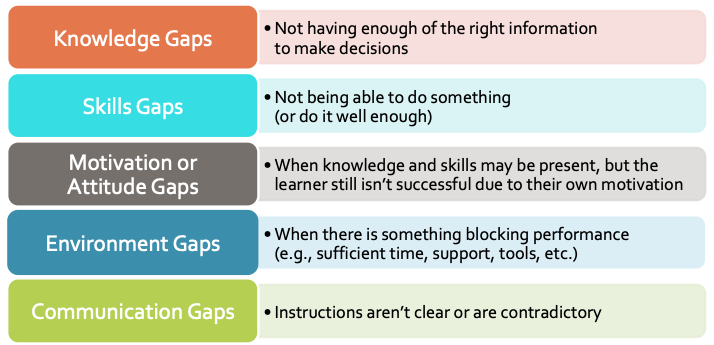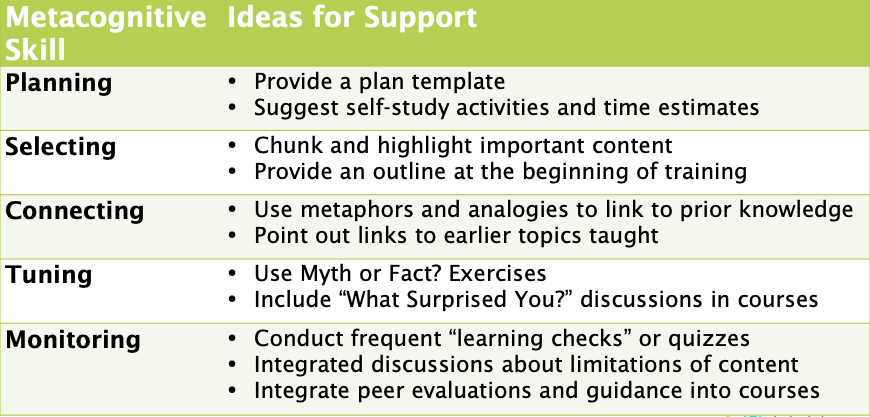![]()
How to Inspire Better Volunteer Performance Without More Training
No matter how much time or energy you devote to preparing new supporters for service, you can expect to encounter a few volunteer performance issues. It’s only natural for folks to struggle a little as they learn the ropes.
But, when volunteers seem to be stuck or unable to find success, it’s up to you to step in and assist. Otherwise, their enthusiasm will wane and it will be challenging to keep them engaged. After all, who wants to stick around where they feel lost or ineffective?
The good news is that you have plenty of options for cultivating success. Although training is a great foundation, it’s not the only solution. There are plenty of strategies beyond training that can give you similar results.
In fact, more training may not even be the answer to the issue at hand.
Certainly, a well-designed training program with focused learning objectives and inspired content can do wonders for the performance of your team. By the same token, though, the issues your team faces may not be due to training.
So, before you start up another slide deck, it makes sense pause for a moment and diagnose what’s up.
Mind the Gaps: Diagnose What’s Blocking Volunteer Performance
To ensure you are actually solving the real problem, and not wasting your time, you’ll need to define which volunteer performance gaps you are attempting to address before you can come up with any solutions.
Below are five common barriers to success on the job, only the first two — knowledge and skills gaps — can be successfully addresses head on through more (or more effective) training.

For new volunteers, common knowledge and skills gaps include things like …
- How to explain the organization’s mission and services succinctly and accurately to the public
- How to fill out and submit required paperwork on time
- How to conduct work safely and what to do in the event of an emergency
- How we do things around here (the unwritten rules or code of conduct)
But, for issues regarding motivation or attitude, the work environment, or communications, more training isn’t likely to help.
So make sure you understand what is driving poor volunteer performance. Is it because volunteers don’t know or can’t do what you’re asking? If so, training may help.
Is it because, they’ve lost motivation, don’t have enough time or the right tools, or are getting conflicting information (if any) from direct supervisors? Then, more workshops, courses, and reading will probably frustrate more than it will help the situation.
14 Alternatives to Training
Below are fourteen ways you can support better volunteer performance without more training. The only caveat is they are easy to find, easy to use, and address the direct barrier to performance that your volunteers are experiencing.
So, do some digging to better understand the actual problem. Then, run your idea by a few volunteers to get their input and refine before implementing. They’ll be happy you’re taking active steps to solve their problems and will feel gratified you thought to ask for their opinions about possible solutions.
- Clarify Performance Expectations — One of the easiest ways to ensure better follow through is to make sure the instructions and expected outcomes are clear. The first place to look is your volunteer manual. Is it up to date and clear?
- Setting Up Feedback Systems — Another way to promote good work is by providing feedback early and often. Things like team shout outs can go a long way in offering positive reinforcement for a job well done.
- Elimination of Task Disruptors — Sometimes, it’s constant interruptions or switching from task to task, that keep volunteers from completing a project on time and accurately. Is there a way to schedule focused quiet time or mega batch tasks to be done at the same time to increase efficiency?
- Job or Role Redesign — In some cases, the volunteer role may have grown over time and is now too big. Or, some roles may no longer be as relevant as they used to be. Is it time to consolidate or develop new position descriptions?
- Organizational or Program Redesign — In other cases, it may be time to take a broad look at the volunteer program as a whole. Is it still working for both the organization and its volunteers? Is there a way to focus volunteer roles and activities on the things that matter most to your mission?
- Environmental Redesign — The problem may simply be the payout of your office. If volunteers need to have access to a printer, is it readily available, or do they have to go down the hall and ask permission? Would a new desk arrangement work better for communication or camaraderie?
- Process Redesign — Or, the problem might stem from an inefficient, legacy process that everyone feel you need to keep “because we’ve always done it that way.” Is it time to revamp your volunteer application and onboarding, client intake process, or other system?
- Incentives/Consequences — Although, people are more motivated by intrinsic versus extrinsic reward, perks can help boost morale from time to time, and consequences are important to maintaining a send of fair play. What perks and social activities can you offer volunteers? When they don’t follow through, are you addressing the issue directly and right away, or are you ignoring it and hoping it will get better on its own?
- Motivation Systems — Along those lines, what other systems can you put in place that reward volunteers for their effort such as badges, promotions, new opportunities, etc.?
- New Resources — Sometimes, it’s outdated tools or equipment that keeps volunteers from being successful. This can be a major source of frustration if their tools at home are of higher quality. Where can you make targeted investments in new tools or technology that will help everyone, including volunteers?
- Increased Technical Support — In addition, when tools are provided you can’t assume everyone knows how to use them. Is support readily available (either by person or a reference tool) if volunteers have questions?
- Increased Mgmt Support — The ability of supervisors to lead and manage others has a clear connection to performance for both employees and volunteers. Do those responsible for leading volunteers schedule regular check ins? Are supervisors clear on volunteer roles and responsibilities?
- Change Mgmt Support & Strategies — When you introduce new initiatives to your team, you can expect resistance to change. It’s only natural, and you can plan for it. Would a volunteer advisory team help you get better buy-in for your next new initiative?
- Job Aids — Finally, and perhaps most simple to pull off is to create simple, easy-to-follow tools (paper or digital) that help support procedural skills to be used in times of need. Would any of the following help volunteers perform their tasks with more confidence and accuracy?
- Flow Chart
- Decision Table
- Checklist
- Recipe
- Diagram
- Script
- Keyboard Shortcuts
- FAQs
- Quick Reference
- Guided Steps
- Worksheet
Helping Lagging Volunteers Learn More Effectively
Even with extensive training and performance support in place, volunteers sometimes lack the basic foundations of learning. Even in these cases, you can design for better results. Namely, by supporting their metacognition.
Controlling your thinking processes and becoming more aware of your learning is called metacognition. Metacognitive skills make you aware of your own knowledge – the ability to understand, control, and manipulate your own cognitive process. In short, you learn how to learn.
Learners are often overwhelmed because they have not developed sufficient metacognitive skills. The good news is that you can use tactics to provide support to help learners learn how to learn.
Below are the types of metacognitive skills we all need to learn better, as well as some cues from volunteers that indicate they need a little extra help with this skill.
- Planning — A learner who has mastered this skill is able to reason out what must be done, create a plan to learn, and organize their time and resources to get it done.
- If the planning skill is a problem, you may hear learners say, “This sure looks like a lot to learn. I guess I’ll just plunge in and see how far I can get. I’m sure it will all work out in the end.”
- Selecting — A learner who has mastered this skill is able to sift through a mountain of information to identify critical information upon which they should focus.
- If the selection skill is a problem, you may hear learners say, “I’m so confused — there are so many details here. Everything looks important. What a lot to learn!”
- Connecting — A learner who has mastered this skill is able to connect new concepts with what they have learned in the past through personally meaningful analogies and other memory aids.
- If the connecting skill is a problem, you may hear learners say, “Wow! There sure are a lot of new words and abbreviations to know! I feel like it’s a whole new language that is totally foreign to me. I’m not sure I’ll ever get it.”
- Tuning — A learner who has mastered this skill is able to fine tune their learning as new information is received. As the learner practices, they integrate new concepts and discard any erroneous assumptions
- If the tuning skill is a problem, you may hear learners say, “Sometimes I get it, sometimes I don’t. I’m feeling lost and worry I’m not going to be able to learn this stuff.”
- Monitoring — A learner who has mastered this skill is able to replace outdated concepts and models with new information as it becomes available; they are also able to assess the limits to which new learning can be applied in a specific context.
- If the monitoring skill is a problem, you may hear learners say, “I know you’ve told me this before, but for some reason I keep doing it the old way. Why can’t I get it right? I’m just not getting better at it. Maybe this volunteer role isn’t for me.”
If you suspect any of these are hindering your volunteer learners, below are a few suggested tools and strategies to support them along the way.

As you can see, there is a wide world of options out there to help you support volunteer performance. All you need is some smart insight into the root problem and some creative solutions. We hope this post helps you get started.
What tactic do you hope to try next?






